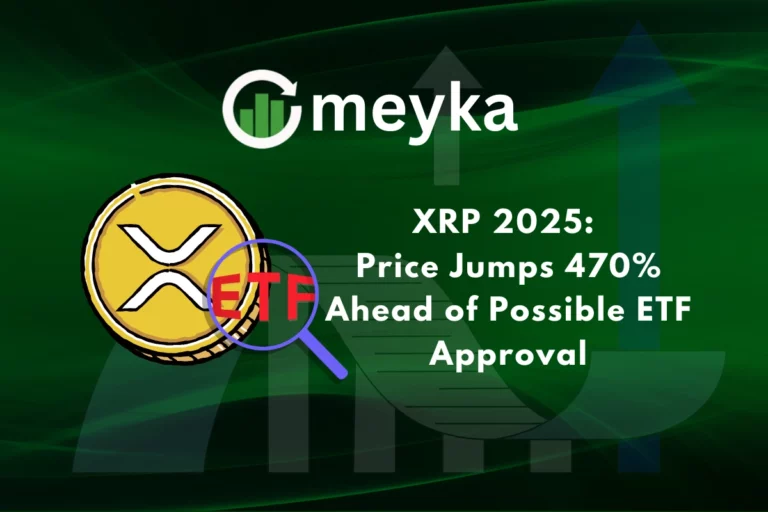Decoding the TMPV Share Price Drop After the Company’s Initial Post-Demerger Results
On November 14, 2025, TMPV released its first set of results after the demerger of its parent company. The numbers surprised many investors, and the stock quickly slid in response. This decline raises questions. Why did the market react so sharply, even though the restructuring aimed to unlock value?
Let’s explore what the demerger meant, how TMPV’s results stacked up, and what might be behind the drop in share price. We will also look at what it means for investors going forward. The goal is to decode the signals and separate hype from real risk and opportunity.
Background on TMPV and the Demerger
Tata Motors officially completed its demerger on October 1, 2025, splitting into two separate companies. The passenger‑vehicle business, including EVs and Jaguar Land Rover (JLR), was renamed Tata Motors Passenger Vehicles Ltd (TMPV). At the same time, its commercial‑vehicle arm became a separate listed entity.
Shareholders received one share in TMPV and one share in the new commercial‑vehicle company, on a 1:1 ratio. This restructuring was approved to sharpen each business’s focus and unlock value for long-term investors.
The record date to get the new shares was October 14, 2025. TMPV began trading under its new name and scrip symbol on October 24, 2025.
Initial Post‑Demerger Results
TMPV released its first earnings as a standalone company on November 14, 2025. The company reported a huge net profit of ₹76,170 crore, a spike of 2,110% compared with the same quarter last year.

However, that number hides an important detail: most of the gain came from a one-time accounting benefit due to the demerger. In fact, underlying operations weren’t as strong. Revenue declined by 13.4% year on year to ₹71,714 crore. And on the operating level, TMPV reported a negative EBIT of around ₹4,900 crore, showing real weakness.
Reasons Behind the Share Price Drop
One-Time Accounting Gain
Much of TMPV’s reported profit came from non-recurring items linked to the demerger, not from core business strength. The market often discounts such gains.
Weak Underlying Performance
While the profit number is headline-grabbing, the drop in revenue and negative operating earnings raised red flags. Investors worry that TMPV’s business without these one-off gains may struggle.
JLR Challenges
JLR contributes a large share of TMPV’s earnings. But it is under pressure. A recent cyberattack disrupted JLR’s production. On top of that, JLR cut its own guidance for FY 2026, forecasting weaker earnings and negative cash flows.
Technical / Market Sentiment
Part of the share drop reflects investor caution after a big structural change. Some traders view the post‑demerger TMPV stock as riskier, especially without clear proof of sustainable profits.
External Macros
Broader market risks also weigh. Auto demand is uncertain globally, supply chains remain sensitive, and macro conditions may make investors hesitant to bet on turnaround stories.
Market Reaction and Expert Opinions
After TMPV reported results, its share price fell as much as 7.26% on November 17, 2025, touching ₹363.15, the lowest since the demerger record date. Analysts quickly pointed to JLR’s weak outlook and one‑time accounting gains as key reasons.

Brokerage firms have grown cautious. Some say TMPV’s reliance on JLR makes it vulnerable. Others note that while the demerger unlocks value, it also brings risk and volatility until TMPV proves it can generate solid free cash flow.
Implications for Investors
Investors face a tricky moment. On one side, TMPV shows a massive one-time profit, which can excite long-term shareholders. But on the other side, the drop in revenue and negative operating earnings create real concern.
Short-term traders may be spooked. The volatility makes TMPV a risky bet. For long-term investors, the question is: can TMPV build consistent, de‑levered growth once the accounting effects fade?
Valuation matters now more than ever. Without recurring gains, TMPV’s future depends on JLR’s recovery, EV adoption, and strong domestic PV business. That makes the long-term thesis more dependent on execution.
Outlook for TMPV & Final Words
Going forward, TMPV’s plans will be watched closely. The company must deliver real operational earnings, not just book gains. Key metrics to monitor: revenue growth in its EV and domestic passenger‑vehicle segments, JLR’s margin recovery, and cash generation.
Analysts are mixed. Some see a turnaround if JLR recovers and EV demand picks up. Others remain cautious, especially given global auto risks. The company’s future will hinge on consistent execution and strategic clarity.
Frequently Asked Questions (FAQs)
The TMPV share price fell on November 17, 2025. Investors were worried because most profit came from one-time accounting gains, while actual revenue and operations were weaker than expected.
After the first results on November 14, 2025, the TMPV stock looks uncertain. Profit was mostly one-time, and operating numbers are weak. Investors should watch future earnings before buying.
TMPV reported huge profit on November 14, 2025, but it was mainly from demerger accounting gains. Core business revenue dropped, causing a mixed reaction from the market.
Disclaimer: The content shared by Meyka AI PTY LTD is solely for research and informational purposes. Meyka is not a financial advisory service, and the information provided should not be considered investment or trading advice.






